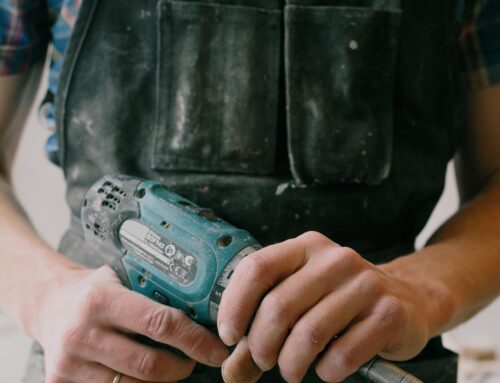
Transform your backyard into something more than just a place to let the dog out or mow the grass! With proper landscaping, you can add value and enjoyment to your property. Plus, it will increase curb appeal for your community and prospective buyers. The projects you undertake depend on what’s available in terms of space and resources as well as personal preferences – there are endless possibilities when transforming your backyard!
1
Plant a Garden
Planting flowers or vegetables is one of the most rewarding landscaping projects you can do. Start by creating a garden plan, then purchase the plants and soil you need from your local garden center. When planting, make sure to place taller plants in the back, shorter plants in front, and to space them appropriately.
2
Consider a Rock Garden
Creating a rock garden is a great way to enhance the landscape of your property. It adds texture and depth to any outdoor space. Rock gardens can also be used to create a peaceful atmosphere in the backyard or on a deck or patio. By carefully choosing plants that thrive in rocky terrain, like succulents and alpine plants, you can create an oasis of greenery surrounded by rocks. For added interest, include boulders and stepping stones throughout the garden. A rock garden not only looks beautiful but it provides habitat for wildlife and helps conserve water because it needs less watering than other types of gardens.
3
Growing Ground Cover
Ground cover can drastically improve the look of any lawn or path—plus it’s easy to plant! Choose from several types of ground cover seeds (such as sweet woodruff or vinca) at your local gardening center before spreading them evenly over your desired area and lightly pressing them down into the soil so they’re firmly secured. Make sure to water regularly during dry spells for best results!
4
Lay Mulch
Mulching helps suppress weed growth, it conserves soil moisture, and provides essential nutrients for plants. When laying mulch, it’s important to choose the right material for your needs. Measure the area that needs to be covered and calculate how much you’ll need.
Then spread a three-inch layer of mulch over the top of your soil using a shovel or rake. Finally add an extra layer of mulch around trees and shrubs for an even finish!
5
Install Edging
If you’re looking for a cost-effective way to spruce up your landscape, this one is for you! It helps define the boundaries of flower beds and garden areas, as well as helps control weeds and grass. Edging can be installed using materials like plastic, metal, or stone. It’s important to install edging properly in order to maintain a neat and tidy appearance. You should start by marking out the area that needs to be edged with string or paint. Then use a shovel to dig a shallow trench along the marked line – ensuring an adequate depth for the edging material you have chosen. Place the edging material into the trench and tamp it down firmly but do not compact it too tightly. Use a mallet or hammer if necessary to ensure the material is secure in the ground. Finally, backfill any gaps with soil or mulch for a finished look!
6
Prune Trees and Shrubs
Pruning trees and shrubs is essential for keeping them healthy and strong. It helps remove dead or diseased branches, encourages new growth, and keeps plants looking their best. Before you start pruning, you should familiarize yourself with the type of plant you are dealing with as some species require special care. Then inspect the tree or shrub to identify any broken or diseased branches that need to be removed. To prevent an unbalanced look it’s important to prune evenly throughout. When cutting, make sure the cut is at a 45-degree angle just outside of where the branch meets the trunk. Finally, use hand pruners for smaller twigs and lopping shears for larger branches that are too thick for pruners to handle.
7
Design a Path or Walkway
This is a great way to add a unique touch to your outdoor space. To get started, decide on the material you’d like to use. Stepping stones come in a variety of shapes, sizes and materials including brick, gravel, ceramic and even concrete pavers. Once you’ve selected your material, measure the area that needs to be covered and calculate how much you’ll need. Next, lightly draw your path as a guide and clear away any grass or weeds before laying the stones. When placing each stone, make sure it’s level with the ground so there are no bumps or tripping hazards. You can also use landscape edging around the stones to keep them secure in place and create a more polished look. Finally, add extra protection against erosion by filling in areas between the stepping stones with mulch or gravel for an inviting entrance!
8
Create Privacy
Looking for fencing alternatives for your yard? You can get more privacy by planting large evergreen trees like Italian Cypress and Japanese Yew or even tall shrubs around the borders of your landscape! There are even options like artificial hedges that require less-intensive DIY installation and upkeep!
9
Construct Outdoor Furniture or Structures
This is a great way to add character to your outdoor space. When it comes to building trellises, arbors and decks, the material you select is key. Wood is the most common material used for these types of projects and provides a classic look that is both strong and durable. Before beginning any construction project, make sure you have accurate measurements and the right tools for the job. Once everything is in place, start off by assembling the frame for your structure using galvanized screws or nails. Then attach your posts and railings before finishing with stain, paint or varnish for a polished look. Finally, anchor your structure into position using stakes or concrete footings to keep it secure.
10
Install Landscape Lighting
Installing landscape lighting is an easy way to add a touch of sophistication and safety to your outdoor space. Make sure you select the right type of lighting for your area and practical considerations like durability, cost and energy efficiency. To get started, begin by measuring the areas that you want to be illuminated and deciding on how many fixtures you’ll need. Then choose a location for each light that is both aesthetically pleasing and safely away from walkways or children’s play area. Look for solar options to minimize costs. Finally, enjoy the majestic transformation of your outdoor space when illuminated at night!
11
Create a Balcony Sanctuary
Adding a potted garden to your balcony or patio is a great outdoor space project for those living in an apartment or a condo. The possibilities are almost endless when it comes to the types of plants you can have – from herbs and vegetables to flowering annuals and perennials. Start by taking measurements and sketching out a plan for your new balcony sanctuary, then select containers to match the style of your space, either picking up pots from the store or repurposing old items like buckets and mason jars. Finally, fill with soil, pick out your plants and voila! You now have an oasis right outside your door.





